What Is a Recovery Email?
A recovery mail address is a fundamental aspect you encounter when you create a new Gmail account. This secondary mail address is crucial for regaining access to your inbox, should you ever forget your password or encounter security issues. It also ensures you keep access to your primary account in any situation.
Your Gmail recovery account is more than just a backup for forgotten credentials. It's a gateway to maintaining access to various services and platforms. By adding a backup address, you're not only protecting your emails but also securing your broader online presence.
Adding and Changing Recovery Email in Gmail
Whether setting up a new account or opting to add another email address to Gmail, managing your recovery mailbox is crucial for security. Read on to discover the specific steps to both add and change Gmail backup email.
How to Add a Recovery Email to Gmail
When it comes to Gmail, adding a backup email is a proactive step towards account security. Follow these simple steps to ensure a smooth process:
- Log into your Gmail account.
- Access the account settings by clicking the gear icon, then See all settings.
- Go to the Accounts and Import tab.
- In the Change account settings section select Change password recovery options.
- When prompted, enter your Gmail password to verify your identity.
- Scroll down to the section How you sign in to Google and click Recovery email.
- Type in the address you wish to use as your recovery mailbox and click Next.
- Check your recovery mailbox for a verification code, then enter it in the popup window and click Verify.

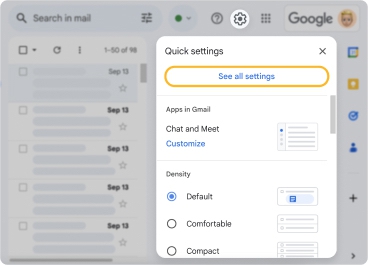
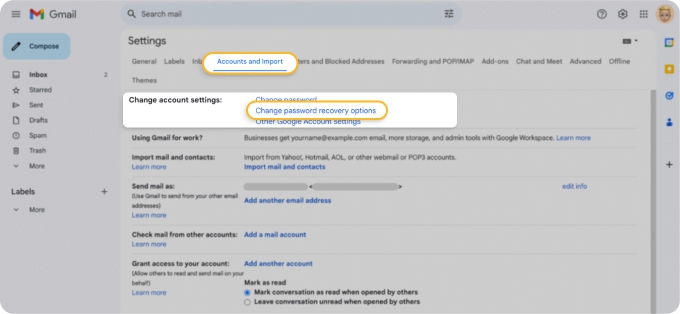
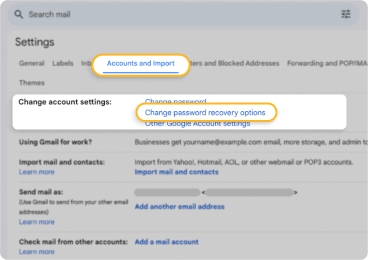
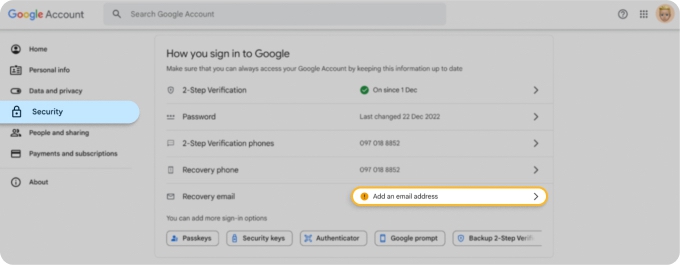
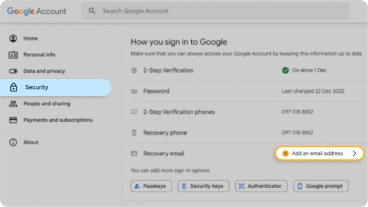

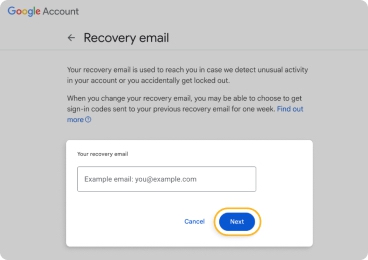

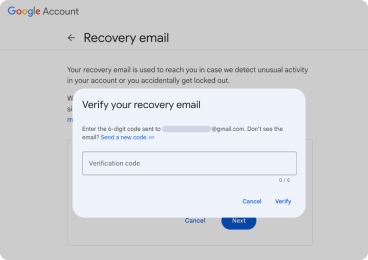
By following these steps, you'll successfully add a backup email, enhancing the security of your mailbox.
💡 Learn how to unblock Gmail and restore access to your Google account.
How to Change Recovery Email in Gmail
Sometimes, you may need to update your backup mailbox. Whether it's due to a change in your primary account or for enhanced security, knowing how to change Gmail recovery email is essential. Here’s how you can do it:
- Follow the steps 1-6 of the previous guide to access your account security settings, and then click on your recovery account.
- When prompted, enter your Gmail password for identity verification.
- Change your backup account to a new one and click Next.
- Enter the verification code sent to your new recovery mailbox and click Verify.

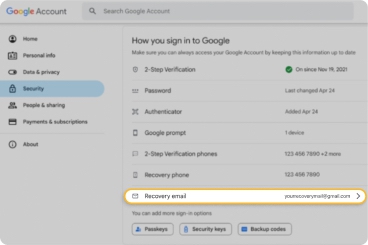
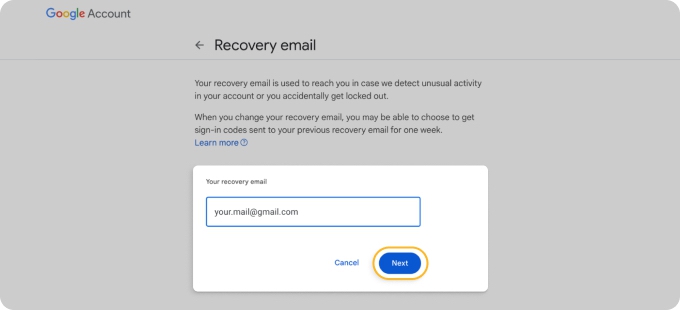
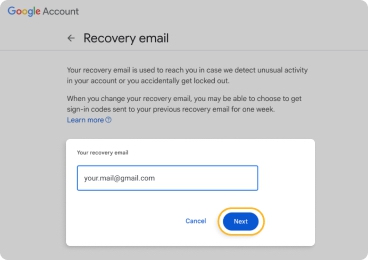
Further Tips for Maintaining Account Safety
- Make sure to regularly check your backup account. It's crucial to maintain access to it and be alert for any security notifications or verification prompts from Gmail.
- If there's a change in your primary mailbox or if your recovery account becomes inaccessible, promptly update your backup email. This step is vital to ensure continuous access to your primary account.
- Like your main account, your recovery mailbox should be protected with a strong password and, if possible, two-factor authentication. This enhances its security against unauthorized access.
Enhancing Gmail Security and Organization with Clean Email
One common security risk for your Gmail account is accidentally clicking a bad link in an email. To protect your account, it's important to regularly change your Gmail password. You should also turn on Gmail 2-step verification, install a reliable antivirus, and use a secure inbox management tool like Clean Email.
📌 Tip: For more useful insights, check out our guide on cybersecurity best practices.
This app makes it easy to organize and filter your mail, helping to keep your inbox both safe and well-arranged. It provides tools to protect your account and maintain a clean inbox. Available across various platforms, Clean Email offers the convenience of managing your mailbox on the go. Let's take a closer look at how it works.
First, the app gives you instant access to Privacy Monitor. This vigilant tool searches the internet for known data breaches and security incidents. If it finds a breach, Privacy Monitor alerts you to take the necessary steps, helping you maintain control over your Gmail security.

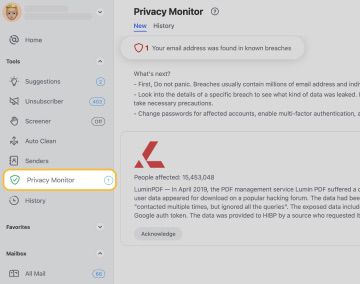
The Screener feature in Clean Email adds an extra layer of protection. It captures messages from new senders, holding them for your review before they reach your Inbox folder. This careful screening lets you allow or block senders, offering a strong defense against phishing threats. It ensures that only messages from trusted sources enter your primary inbox.
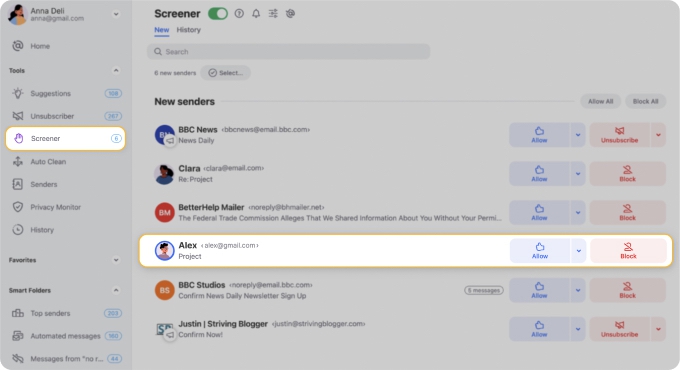
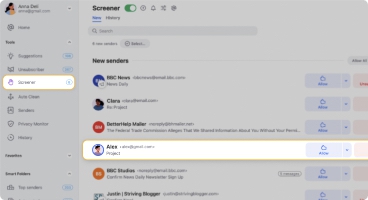
The Cleaning Suggestions tool effortlessly keeps your mailbox clutter-free. It suggests quick actions tailored to your past behavior and how other users have interacted with similar messages. This optimizes the process of deleting outdated mail or archiving those you no longer need. Additionally, you can perform other actions, such as marking emails as read, adding labels, or placing them in a Read Later folder for future reference.
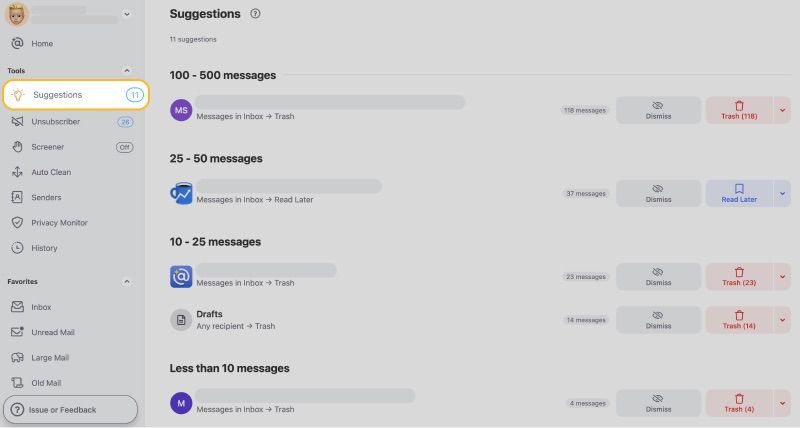
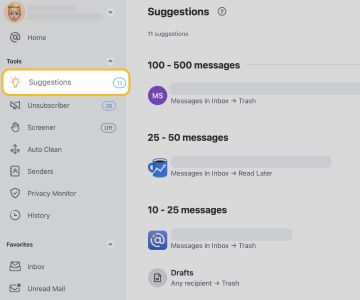
Clean Email's Unsubscriber tool simplifies decluttering your inbox by making it easy to unsubscribe from newsletters and marketing emails. With just a few clicks, you can opt out of messages from specific senders or domains. The tool manages sending unsubscribe requests and completing necessary forms for you, eliminating the hassle with senders who omit unsubscribe links in their newsletters.

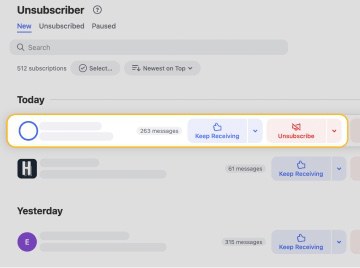
The Auto Clean feature lets you control your mail by creating rules. You can automatically send promotional messages to the trash or direct newsletters to a specific folder, keeping your inbox organized. This feature also allows you to automate actions, such as starring or flagging replies and prioritizing emails from important senders. With Auto Clean, you set the rules, and the app handles everything else seamlessly.
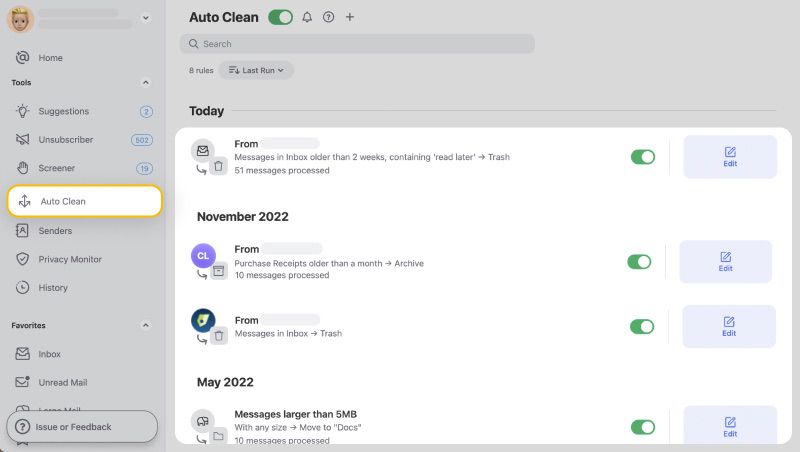

Clean Email is dedicated to enhancing the privacy and security of your Gmail experience. With its comprehensive suite of tools, it simplifies inbox management while prioritizing your digital safety and inbox organization.
Troubleshooting Gmail Recovery Email Issues
Issue 1. Verification Code Not Received
Solution: Check the accuracy of the entered email address and ensure it's not in your spam or junk folder. If the problem persists, try resending the verification code or use an alternative verification method provided by Gmail.
Issue 2. Password Verification Failure
Solution: Double-check that you enter the correct password associated with your Gmail account. If forgotten, follow Gmail's account recovery process.
Issue 3. Error Messages or Page Not Loading
Solution: Refresh the page or access Gmail from a different web browser. Clear your browser cache and cookies to resolve connectivity issues.
Issue 4. Recovery Email Already in Use
Solution: If your chosen recovery email is already linked to another Google account, consider using a different email address or unlink it from the existing account.
Issue 5. Need Account Recovery Assistance
Solution: Reach out to Google Support for personalized guidance and assistance in troubleshooting persistent issues with changing your recovery email.
Conclusion
In this guide, we've explored the steps to update your recovery email Gmail address, a crucial step for keeping your account secure and accessible. A secondary account is more than a backup; it's crucial for protecting your online identity. Clean Email complements Gmail's features by enhancing your inbox management and security. Together, they offer a robust defense against digital threats.
FAQs
How to add recovery email to Gmail?
To add a backup account, sign in to Gmail, head to Settings, select 'Accounts and Import,' go to 'Change password recovery options,' and add the backup mail address in the 'Recovery email' section.
How do I change my recovery email on Gmail?
To change your backup account in Gmail, follow the same steps as for adding a recovery mail address. Then, in the 'Recovery email' section, click the old mail address to replace it with a new one.
How to change recovery email in Gmail without login?
Changing your backup mailbox without logging in is not possible directly. You'll need to first recover your account through Gmail's account recovery page using other authentication options like your phone number or another mail address.
Can you have more than one recovery email in Gmail?
Yes, you can add multiple recovery emails in Gmail by accessing your account settings, navigating to the "Accounts and Import" tab, and selecting "Change password recovery options" to add additional email addresses for recovery purposes.


